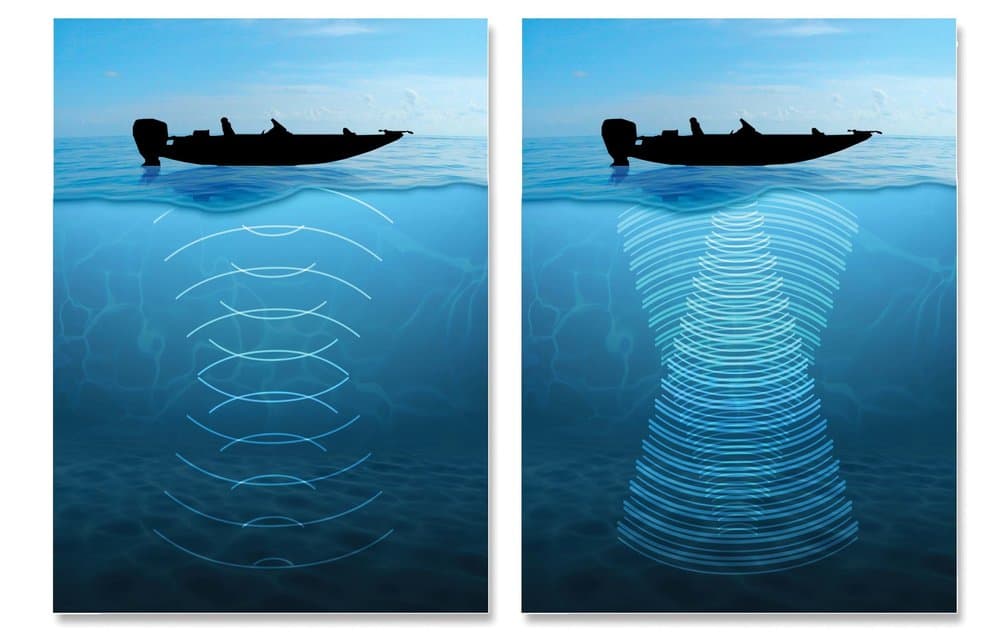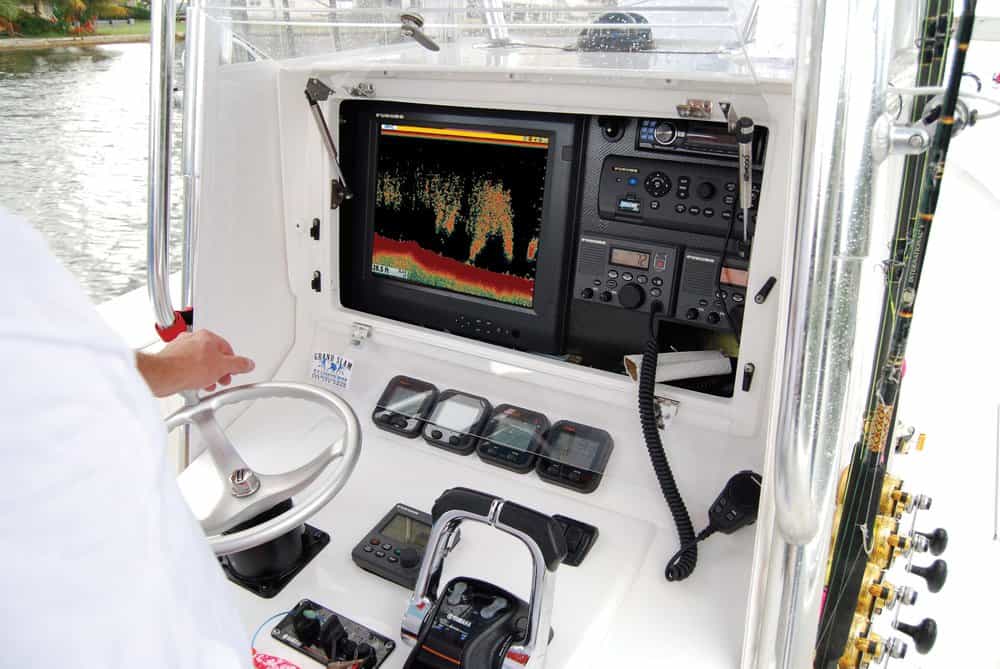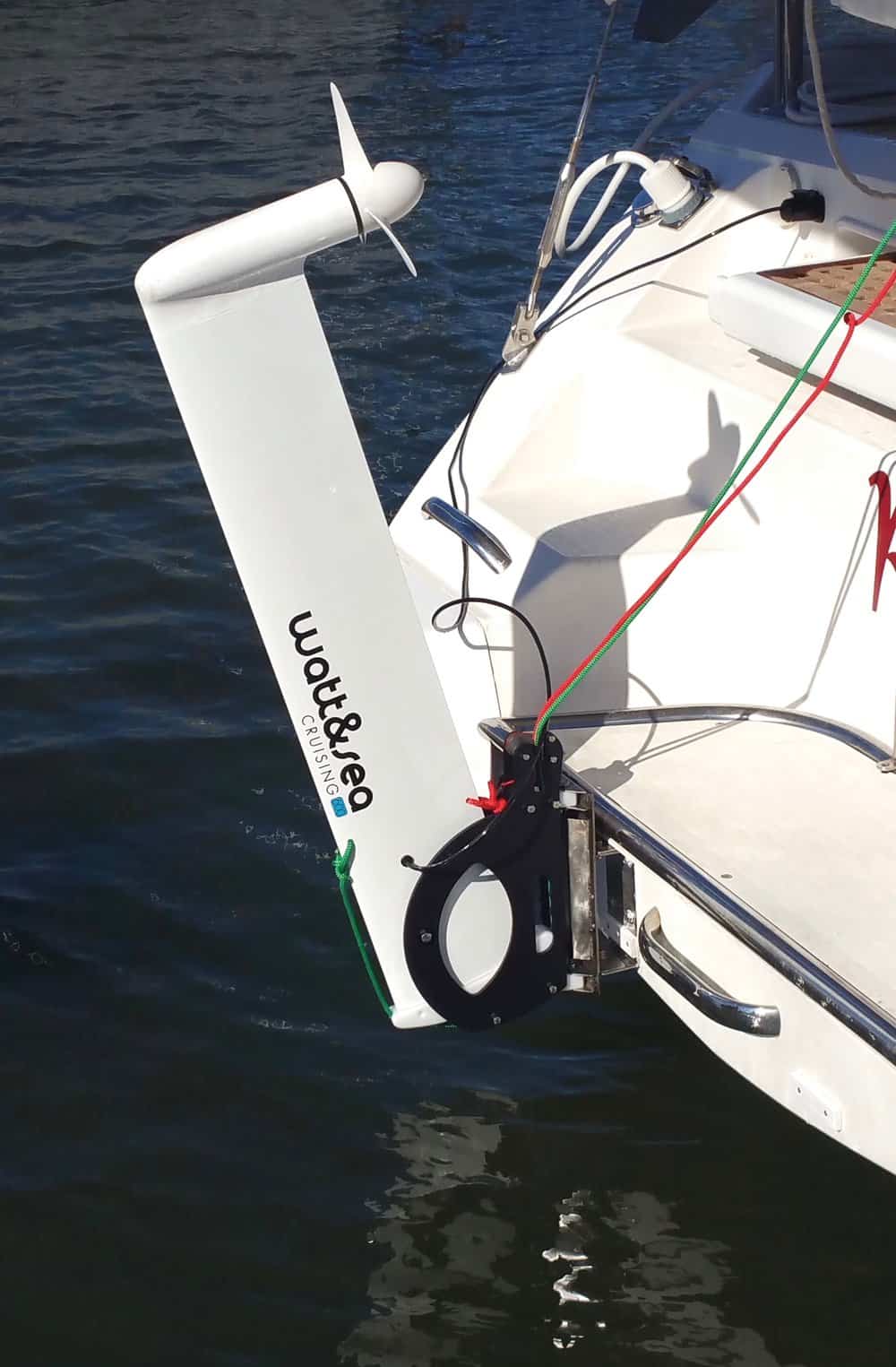A basic look at what CHIRP sonar will do to help you catch fish.
by Mark Eustis
photo by FurunoWhen your Granddad was young, folks fished by eye and memory. He watched the weather, looked at the tide tables in the morning paper, and lined up landmarks to find his hotspots on the Bay.
Fishing’s different now. Electronics have made it a lot easier for folks to find and identify fish. Turning the key these days powers up more electronics than a Cold War minesweeper. Thumb through a list of waypoints and your multi-function display will plot a course to within a boatlength of where you want to be and show you remarkable detail of what’s underneath the boat.
Sonar, once only a military tool, has been around for 100 years. It runs on simple physics: a transducer emits a sound; sound travels at known speed in water; depth measurement is calculated from the time difference between the sound’s origin (ping!) and when reverberations (pong) are received from objects below. The onboard display device generates the signals, processes the measurements and renders the results as graphics on a multicolor screen.
Recreational fishing sonar transducers work on one or two frequencies—a 50kHz wide-beam that penetrates deep in the water column and a narrower 200kHz beam to show more detail that works best in water less than 400 feet.
Now, we have CHIRP (Compressed High Intensity Radiated Pulse) sonar. The Navy has been using CHIRP for decades, but with newly affordable computing circuits and transducers, CHIRP has trickled-down to recreational users. But, is it really better?
Yes it is.
CHIRP follows the same basic principle as regular sonar, but the process relies on a measure of highly complex math beyond explaining here. In basic terms, CHIRP is a digital process to create, amplify, and emit a focused beam of sound energy. The onboard device uses specialized Digital Signal Processing (DSP) circuits to generate sounds from your transducer. Custom chips in the onboard device then process measurements and display results as color graphics.
CHIRP transducers emit discrete signals across a wide range of frequencies. My new 1,000-watt, wide-beam high-frequency CHIRP transducer starts at 150 kilohertz (kHz) and emits at 1-kHz intervals all the way up to 250 kHz. With 100 discrete signals and plenty of echoes to combine, the new display shows a remarkably clear picture. And the new wide-beam CHIRP covers the same area below the boat as my old transducer did at its widest setting and does so at high frequency to show crisp details. A perfect choice for when fishing the shallow Chesapeake. If you’re planning to go offshore to the canyons, a low-frequency transducer is a better choice to penetrate much deeper water.
When shopping for a CHIRP system, some of the more important considerations are transducer frequency, beam width, and power, as well as digital signal processing (DSP), power to the transducer, and screen resolution of the Multi-Function Display.
Most mid- to high-level CHIRP display units will perform very well. More power to the transducer means stronger signals, and a bigger screen will show more information. A large screen will allow you to run charts and depth scans side-by-side without squinting. Also, with a more powerful processor chip, the newest display units extract more information from the increased data flow from a CHIRP transducer. And higher screen resolution will show greater detail as well. You get what you pay for.
That said, if you’re fishing creeks from a johnboat, a little less power and a smaller screen will probably suit you fine. If you’re running and gunning from slow spot to hot spot out on the Bay, you will want more capability.
So, what does CHIRP mean in the real world? Capt. Buddy Kirkhart, a light-tackle guide in Stuart, Fla. says, “I’ve been fishing shallow water shoals and channels for decades, and CHIRP shows me fish we’ve never seen. I mean, we know they’re there, because Grandpop showed me the spots, and we’re still catching fish today. What I like is when we’re jigging the dropoff next to a channel, CHIRP picks out the better class of fish hanging just off the bottom, so we can drop right on ’em. Now they can’t hide.”
CHIRP is a big leap forward. Does it mean you’ll catch more fish? Well, I won’t say you can buy your luck, because you still have to get a fish to eat your humble offerings. And what with the moon and the tide and the unpredictability of forage fish, those big fish from last week probably will be someplace else today. But if there’s a fish under your boat, you’re going to see it with CHIRP.
So by all means go out and smell the seawater and enjoy the experience. And if you find fish in those same old places, take a two-footer home for dinner if you’ve a mind to, and consider leaving the rest for next time. Enjoy the Bay.

Furuno
All-in-one and component-based GPS/chartplotter systems with multiple interfaces to RADAR, GPS, and fish-finding. Also, precision fish-finding and multisensory navigation systems for commercial uses. A new line of recreational fishing units coming this summer under $1,000 up to $2,000 networked, multifunction units.
Garmin
Five-inch screen fish-finder only devices from $399 up to 24-inch multifunction units with networking $699 to $1,299.
Hummingbird
Chart/GPS units from $299–$1,899 with CHIRP, sideview, 3-D imaging and multisensory integration seven- to nine-inch displays $399 to $1,299.
Lowrance
Five-inch screen kayak model CHIRP at $299 to a 16-inch multifunction with 3D, sensor networking, fast-DSP Carbon 16 for $4,999. Of particular interest is the price-conscious feature-packed Hook2 line with 12 models from $119 to $1,499.
Raymarine
$199 for a WiFi Blackbox, which uses your smartphone screen upwards to a 16-inch display at $5,399. Also seven- to nine-inch multifunction chartplotter/CHIRP fish-finders from $699 to $2,699. They also offer ultra-high-end networked system, some with FLIP night-vision.
Simrad
Five-inch screen base model CHIRP from $419 up to a 12-inch WiFi-enabled multifunction unit at $3,499. Also, seven- to nine-inch multifunction chartplotter/CHIRP fishfinders from $699 to $1,200.
Mark Eustis has worked with imaging satellites, GPS and computer maps for over thirty years. He’d rather be on the Bay fishing.




